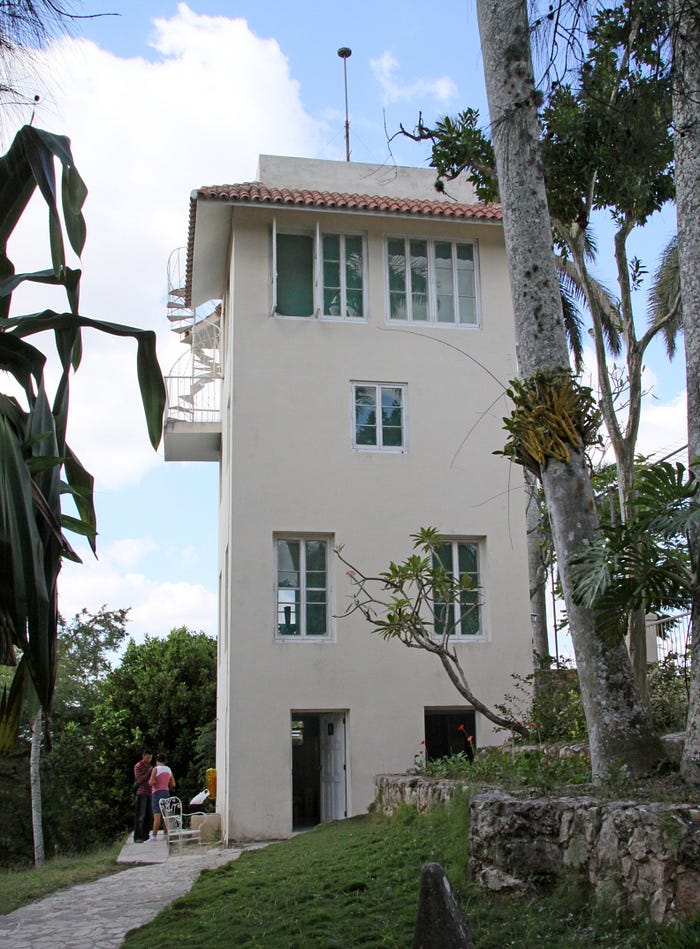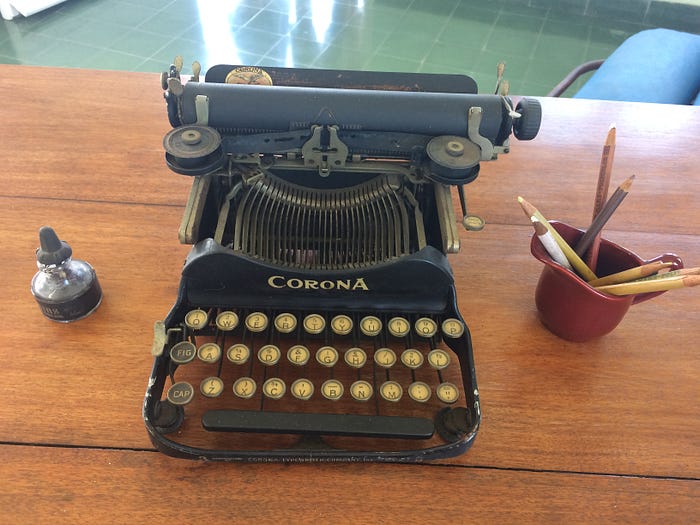It refers to a long-standing relationship — the woman here is a life partner, a wife. Now, I know it's an old saying, and we've since come a long way, but: behind? Yeah, sure, he's in the spotlight, I can grasp the visual side of it, but still.
Successful men have often found inspiration in other women as well, along the way. Their muse would usually be young, rather good-looking, with an interesting personality and artistic aspirations. The story goes that these encounters would often, quite unexpectedly, hinder rather than advance these women's artistic growth and in many cases make their lives take a negative turn.
Adriana Ivancich was 19 years old when she met Hemingway. She was standing on a road crossing not far from Venice, waiting for her friends to pick her up. They would all go duck hunting in the lagoon the following day. Hemingway recalls their meeting as „something that struck me like lightning at the crossroads in Latisana in the rain."
Hemingway was already a well-known author who had spent the previous ten years in complete artistic torpor. Almost 50 years old, struggling with his mental and physical health, and drinking too much, Hemingway wasn't in a good place.
Ivancich was born in Venice, into a noble family of Croatian origin. Their friendship developed very quickly, and Hemingway, feeling inspired and invigorated, finished the book he was working on (Across the River and into the Trees), shaping the character of Contessa Renata after Adriana.
"You made it possible for me to write again and I will be grateful to you always," he told me. "I could finish my book, and I gave the protagonist your face. Now I will write another book for you, and it will be my most beautiful book.
It will speak of an old man and the sea." *
Adriana liked to draw, so she made some drawings for the book cover. She said she had done it "just for fun", not having a clear purpose. Hemingway took the drawings to his American editor Charlie Scribner, and it became the cover for the first American edition of the book.
During Adriana's visits to Cuba, she and her mother used to stay in Casita near the Finca Vigia, residence of Mary and Ernest Hemingway. There was the White Tower, with Hemingway's writing studio on the second floor. The first floor was occupied by his forty cats, and Adriana would paint or draw on the top floor. She and Hemingway developed their secret society, the White Tower Incorporated.

"Once in a while Papa came up to read me some pages from the new book, The Old Man and the Sea; once in a while, I went down to show him the drawings. Once in a while — not often, out of mutual respect for our work.
Papa wrote with a typewriter. Standing up. The typewriter was on a pile of books, on a table. He would back up a couple of steps, to think, then advance again and beat out one sentence, two sentences at the most. Through the glass door I watched him move forward and back, as a painter does before his painting, and from the expression on his face I knew whether I could interrupt or not."*

In the meantime, several articles appeared in European newspapers, reporting suggestions about their relationship, describing it as improper and indecent. Adriana's mother, very upset, decided it was time to go back home.
One year later, Adriana received a letter from Hemingway:
"If I'm able to write well enough, they will speak of me and of you for many hundreds of years, because we have worked hard and well together. Some will think it, and only you and I will know, and we will be dead. Perhaps I never should have known you. Perhaps it would have been much better for you." *
Ernest Hemingway committed suicide on 2 July 1961.
Suffering from depression, Adriana Ivancich ended her life in 1983. She was 53 years old.
Was Hemingway's reputation damaged by these rumours and insinuations? And also, was he right? Would it have been better if they'd never met?
We can only speculate, but there are a couple of things to consider. A 19-year-old girl in the late 1940s, probably with all the naivety and big dreams of her day and age, was treated by the media with derision and scorn, and the only important question related to her was: "Did they do it or not?"
Such a shallow and one-sided approach could not do any good, although it seems not to have harmed The Writer himself. He was the one who took inspiration, benefited from her presence, and wrote his finest work.
We can discuss whether she had anything to do with this, of course. The point is it is never a fair game. It has never been.
The flame is strong, and it burns the heedless moth.
*(IVANCICH, A., & CIRINO, M. (2014). I Am Hemingway's Renata. PMLA, 129(2), 257–266. http://www.jstor.org/stable/24769457)